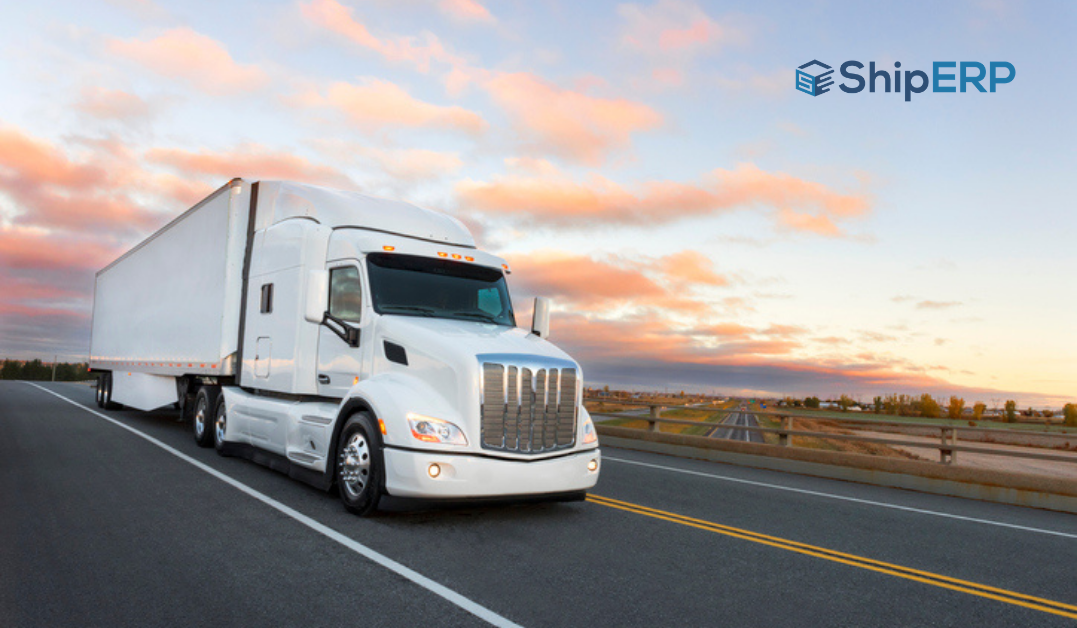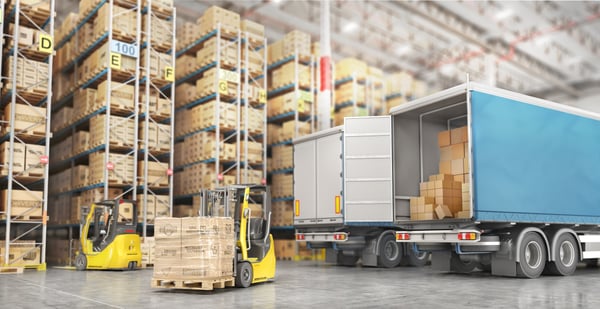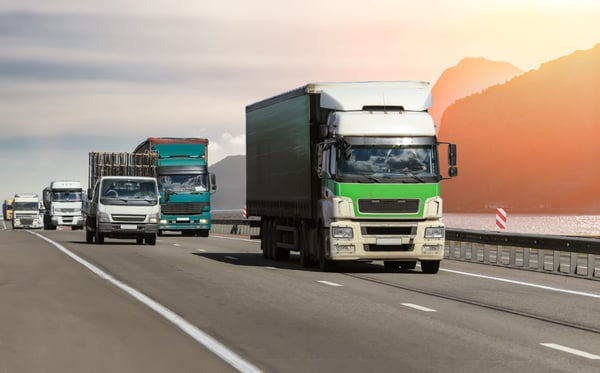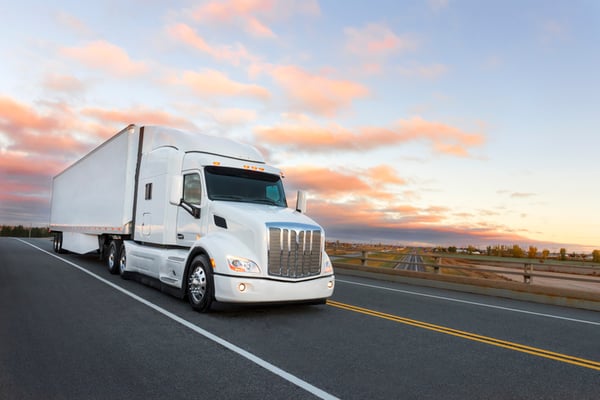
LTL Shipping: Challenges, Best Practices, & More
Under the right circumstances, less-than-truckload (LTL) shipping is the right choice for your business. Knowing when to use LTL shipping compared to your other options, however, is crucial to saving costs and improving efficiency!
It's best to understand LTL shipping to reduce shipping costs and improve your supply chain efficiency.
What is LTL Shipping?
To put it simply, LTL shipping is the transferring or transportation of small freight. For a lengthier explanation, LTL shipping is essentially the in-between shipper for carrier shipments sent through the carrier service, UPS or FedEx, and full truckload shipping.
You can usually transfer loads that are well over 150 pounds but less than 2,000 pounds. There are several different perspectives on what LTL shipping is and what is considered as less than truckload shipment.
Full truckload carriers can transport less than truckload shipments from many companies and have a full truck. If your cargo takes up just a third of the truck's total capacity, your shipments are still considered LTL.
A common way to execute LTL shipping is with the common carriers who also handle and manage freight. Some parcel and carriers, such as FedEx Ground and UPS, have freight shipping options available. They are also the most likely to accept non-palletized cargo.
What does this all mean? You’ll have plenty of cost-saving opportunities!
Companies and businesses around the world depend on LTL shipping to transfer their freight. For direct-to-consumer brands, the LTL shipping method offers a cost-effective approach for moving eCommerce inventory so that it can be fulfilled promptly. This approach helps you to prevent overpaying for warehousing.
Understanding LTL shipping and freight will help you get the most out of your shipping experience. Let's jump into the world of LTL freight!

What is LTL Freight?
LTL freight is a method that transfers or transports cargo that doesn't need a full truck, allowing you to consolidate your cargo with the shipment of other shippers moving in a similar direction.
This more efficient and convenient transportation mode lets you only pay for your portion of the truck trailer rather than in full.
Note: An LTL freight shipment typically weighs roughly about 150-10,000 pounds, or consists of 1-10 pallets.
How Does LTL Shipping Work?
Within a local area, the LTL shipment operator has several vehicles that collect shipments from you. After finishing the daily collection, it's time for all the loads to unload in a terminal.
Here’s the process in the distribution center after the shipments are unloaded:
- Each shipment is weighed and rated, which allows customer bills to be processed.
- The carrier loads individual LTL shipments onto an outbound truck or vehicle with shipments from other customers bound for the same location or geographic area.
- The outbound couriers and shipments arrive at the appropriate regional terminals for unloading.
- The loads are sorted and placed on local vehicles for delivery.
- Each shipment is handled many times from the time it is picked up from the customer until it reaches its final delivery location.
When Do You Use LTL Shipping?
The LTL shipping method is most used when you ship palletized cargo from a distribution center to any local terminal. The center will consolidate the freight for LTL shipment to the retailers.
This process is called “hub and spoke” operations. In these LTL shipping operations, pick-up and delivery drivers regularly use set routes to be home frequently and build their professional carrier relationships with you. These relationships between retailers and drivers are essential for your LTL shipping experience.

The 3 Benefits of LTL Shipping
Lower Shipping Costs
With the help of LTL freight, the truckload comprises many smaller shipments that fill a whole truckload. Because your shipment is not utilizing the entire truck capacity, you only need to pay for the space or site you are using.
Adaptable for Business of All Sizes
Small businesses benefit from the LTL shipping method because they tend to ship fewer goods and spend way less money on freight than larger companies do.
LTL shipping affords small companies benefit from all the services professional LTL shipping provides without paying much more money for space they don't need.
Friendly for the Environment
The LTL shipping method results in fewer trucks or shipments carrying full loads than way more trucks hauling less than their workload capacity. This method reduces emissions because it decreases the number of trucks required to get goods to their destinations.
How Are LTL Shipping Rates Determined?
- Additional services: You'll be billed extra surcharges for special requests like residential pick-ups/deliveries or liftgates to load the shipment.
- Location: Mileage is one of the most critical factors in pricing, with longer distances resulting in higher shipping rates.
- Density: Many carriers rate according to the cubic size of a shipment & the number of skids and space taken up on the truck.
- Freight Class: Freight class generally help carriers determine pricing for different products and materials (for shipments that travel within the US). In general, the higher or more the class, the higher the rate is.
The 3 Major Challenges of LTL Shipping & Freight
Long Delivery Time Period
With the help of LTL freight, time sometimes suffers as a tradeoff for flexibility and price. Because each truck contains individual freight from various clients destined for different but similar locations, sometimes, it takes longer for freight to arrive!
Therefore, it is crucial to budget more time for LTL freight to arrive at its destination than you would for a full truckload freight.
Finding the Right LTL Carrier
Some carriers generally offer LTL shipping, but not all carriers do. A significant challenge can sometimes be finding a carrier willing to ship LTL. But when you do, make sure the carrier gives you the correct rate!
Inaccurate LTL Freight Information
The LTL shipping method needs a lot of focus on details: freight class, weight, pick-up and destination locations, deadline, etc. All these elements affect the price your organization pays for LTL shipment or freight.
Understanding which details lead to high shipping charges can help identify cost-saving opportunities! Therefore, it is crucial to pay attention to all specifics when determining your LTL shipments' logistics.
![]()
Best Practices of LTL Freight Shipping
Once you have decided to execute LTL shipping, you need to follow many other best practices. To successfully ship LTL shipment, make sure your company pays attention to the following components:
Use a Transportation Management System
A transportation management system/process helps shipment optimization, visibility, business intelligence, and other global supply techniques and chain talent lower costs, improve efficiencies, and gain a competitive benefit in your global supply chain.
The method would examine every LTL shipment for the opportunity to combine other loads on nearby routes. The carrier would then be able to build multi-stop full truckloads of freight.
The expertise, along with a TMS, can help your organization or company choose an LTL carrier, ensure correct charged rates, optimize goods and routes, and answer any queries you may have along the path.
Leverage Consolidators
No matter how good your LTL software is, you can't consolidate freight unless you have a specific LTL volume. Fortunately, with freight consolidators, even small volumes can ship via LTL.
Freight consolidation companies bring partial loads from you into their consolidation center, and they use their technology and volume to create full truckloads. Any company or organization participating in this process receives greater efficiency and saves much money.
There's something else you need to know, too. Consolidation centers are not sleepy warehouses/stores where freight sits around to collect dust. A lot of activity and planning is involved, with compatible loads regularly being combined and shipped.
Often, the lifecycle of a freight shipment in the center is within 24 hours. But with reliability and efficiency at the heart of consolidation, shipment is typically handled less often than a standard LTL carrier. So, prevent damage and claims with consolidation!
Provide Accurate and Proper Information About Your Shipments
Carriers must spend much more time, resources, energy, and money to handle freight packaged and reported improperly.
Try to maintain healthy relationships with every carrier by accurately reporting information about your shipments (weight, freight class, etc.) and packaging them appropriately based on that freight's properties.
Reliable information will save carriers time and expense, ensuring you have a positive relationship with LTL shipping carriers going forward.
Improve Visibility on the Delivery of Your Shipments
Just as you must provide accurate details about your shipments for a smooth delivery, carriers can give back just as much valuable information!
The best way to manage your LTL shipping and collaborate with carriers is through a carrier communication software. Some solutions allow your carrier to update the status of your deliveries in real-time. For example, CarrierPORTAL is a mobile-accessible web portal for carriers to push shipping notifications and receive digital signatures as proof of delivery.
Not only can you feel reassured by the real-time updates, but your customers will also appreciate the ability to check-in on their shipments. You'll provide crucial value for the customer experience to retain customer loyalty with a carrier communication software. It's a win-win situation for both relevant parties: your company and your customer!
How Do You Successfully Optimize Your LTL Freight?
It's kind of a logistics conundrum that almost every shipper faces: how to best possible route freight that is usually more than six pallets but not enough for a filled truckload.
If you don't have a full load to ship, selecting a full truckload service may be a less eco-friendly option because of the unused truck space. This opportunity is a chance for freight consolidators to add value and efficiency to the supply chain.
With the help of freight consolidation, shippers can drive down costs and emissions. Take benefit of transportation networks and freight volumes by consolidating shipments into full truckload shipments.

Final Thoughts & Your Future Path with LTL Shipping
Your company should keep LTL freight as a shipping method in mind! Depending on your organization's shipments, LTL freight can be extraordinarily efficient and cost-effective.
It is vital to know how the LTL industry is run and can work to benefit you and what steps you can take to get the maximum output out of LTL freight.
Start with Managing Freight Carriers with CarrierPORTAL
Your first step in your path with LTL shipping is integrating a carrier communication software within your processes. If you're interested in an efficient and reliable shipping process, CarrierPORTAL is the solution for you!
It's time to simplify carrier assignments and shipment tracking! With just a single software, you can easily track and manage your freight to significantly improve your supply chain transparency. For example, your carriers can quickly send real-time updates of your freight's delivery status through a mobile-friendly web portal.
From pick-up to delivery, you'll receive it all through CarrierPORTAL!
It's not just you who'll feel relieved with the location updates. Your customers will not need to worry when they'll receive their packages! Get the best of both worlds with one solution.
Sign up for a free product demo of ShipERP's carrier communication software CarrierPORTAL.
Discover how one solution can significantly improve your LTL shipping. Learn more about your future benefits, processes, and return on investment with CarrierPORTAL in this visual guide.

